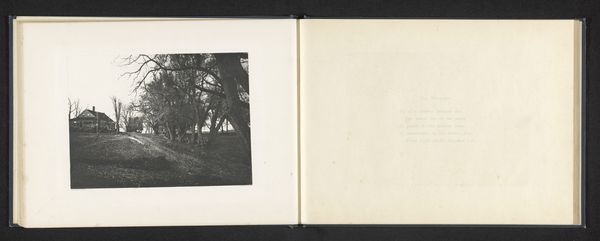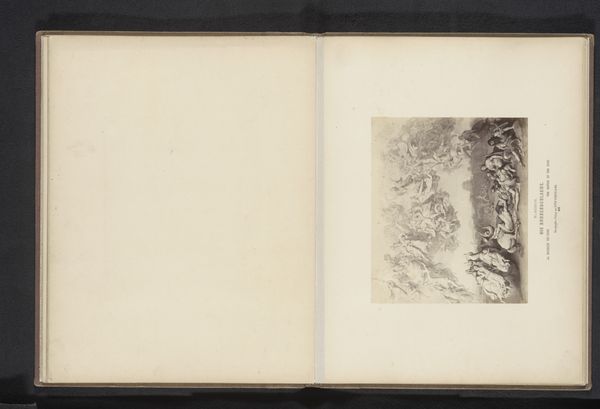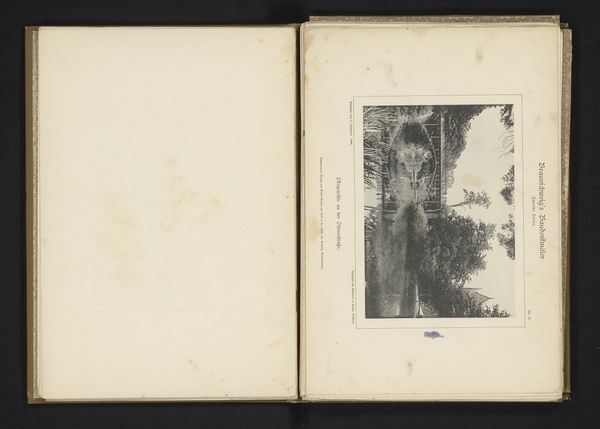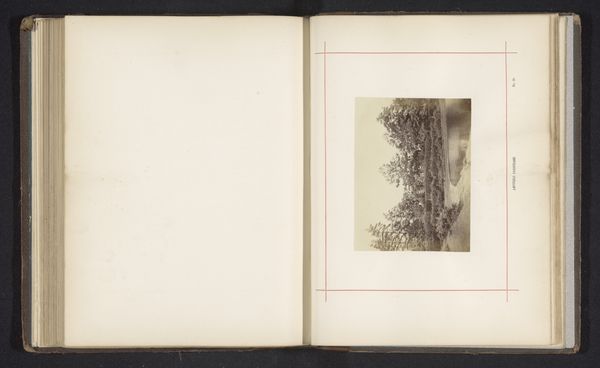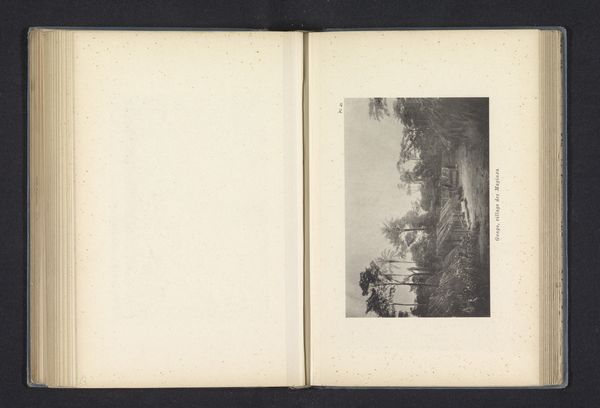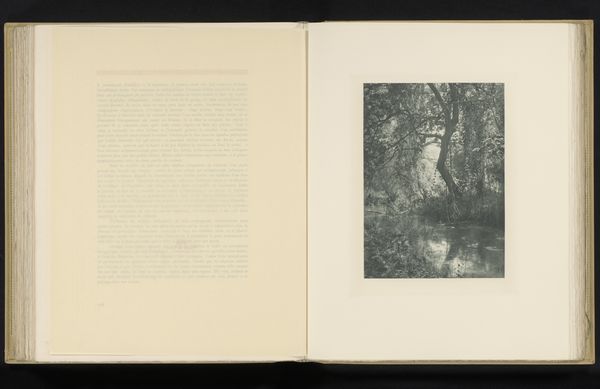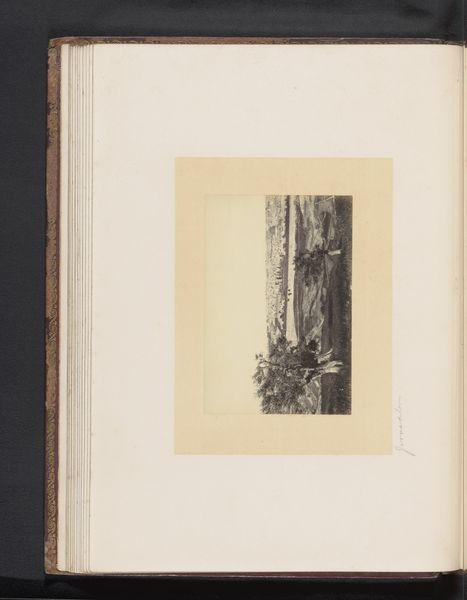
photography, albumen-print
#
aged paper
#
script typography
#
pictorialism
#
paperlike
#
typeface
#
hand drawn type
#
landscape
#
personal journal design
#
photography
#
hand-drawn typeface
#
stylized text
#
thick font
#
delicate typography
#
albumen-print
Dimensions: height 139 mm, width 189 mm
Copyright: Rijks Museum: Open Domain
Curator: This is an albumen print dating to before 1890. The piece is titled "Gezicht op Hope Island in de Casco Bay." It depicts a landscape, the composition mostly taken up by the foreground with various evergreens set upon a slight rise, and, in the distance, perhaps an island or part of a peninsula. What strikes you first? Editor: Immediately, I'm drawn to the palpable stillness of the scene, which reads as both beautiful and mournful. It suggests a commentary on how landscape imagery participated in the erasure of Indigenous presence through romanticized natural settings. Curator: I agree that stillness is palpable. The light contributes greatly, being somewhat muted, indirect—cloudy perhaps—though soft enough to allow a full range of midtones to come through in the photographic print. Now, in what ways does photography engage with ideas about erasure that concern you? Editor: Well, the late 19th century saw a surge in landscape photography precisely as Indigenous communities were being displaced and forced into assimilation. The aestheticization of nature through art helped normalize a national narrative that justified colonial expansion by obscuring existing, long held indigenous social relations with the land. This photograph could inadvertently reinforce that. Curator: An important point, especially given that Maine, and specifically Casco Bay, have a rich, complicated, and often tragic history tied to colonization and conflict between Europeans and Native Americans. How might knowing that context change how we see a photograph like this one? Should the viewer bear some degree of responsibility for considering this angle? Editor: Absolutely. Recognizing the political dimensions is crucial for disrupting the romantic allure. We need to confront how the arts become tools of power, shaping collective memory. By addressing historical and cultural dimensions, viewers might move beyond purely aesthetic consumption and recognize how intertwined land is to power and justice. Curator: And while there's no direct indication that this image serves as deliberate propaganda, so to speak, its relationship to that context does suggest something about what sorts of perspectives became centered in the art world—and what viewpoints and communities were excluded, marginalized, or actively silenced in the same historical period. Editor: Exactly, this prompts me to remember Frantz Fanon’s work on the psychology of colonialism—to consider the lasting psychic impacts. Examining the aesthetic choices helps reveal the subtle workings of cultural dominance. What appears to be an objective rendering of reality is, in effect, carefully constructed to express values and interests specific to those with power. Curator: Thank you, these thoughts invite us to rethink our own viewing habits and to keep challenging assumptions around identity, aesthetics, and representation.
Comments
No comments
Be the first to comment and join the conversation on the ultimate creative platform.

